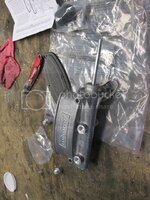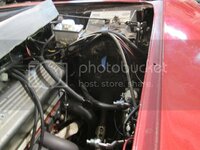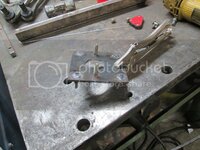SuperBuickGuy
Well-known member
knurling requires a lathe.... with the hood closed; it looks perfect.
i think the project looks great with the hood open!
i think the project looks great with the hood open!
I agree, and especially mine being driven almost daily.....I look at cars with a slightly jealous eye....:clobbered:



Yes there are - I have a spreadsheet on my other computer that I'll post up here tonight.
Though I have a question about the C3 system. It is beyond my pay grade to understand why the front (which operates the front brakes) brake line from the booster to the proportioning valve is smaller to the front wheels than it is to the rear. I intend (unless some explains to me prior) to change the lines to the proportioning valve to same size (and let the valve, not the pipe size change the amount of fluid the front brakes get).
I think someone made a mistake at SS brakes because the front line/rear line orientation on a C3 is reversed of what is "normal." Normally, the front reservoir feeds the front brakes, and the rear the rear brakes; but on a true C3 Master cylinder the line from the front then crosses to the back of the proportioning valve.... however, as the fitting size is different front/rear, it's impossible to screw up from my end. What is odd, in all of that, is the smaller line feeding the front calipers since there are more pistons in the front than in the rear.
Or I could be complete full of shit.... but everything I've read points to what I just described.
i sent you my email address for that file, i would like to see that.
I bet the line size has more to due with how fluid moves over distances and the bigger pipe going to the back has less residual pressure loss so the "pressure signal" front to back is more even, and the proportioning valve is controlling volume as opposed to pressure
I got the file thanks, maybe GM being cheap skates was trying to save a few pennies on each car every where they could hence the smaller tubing
